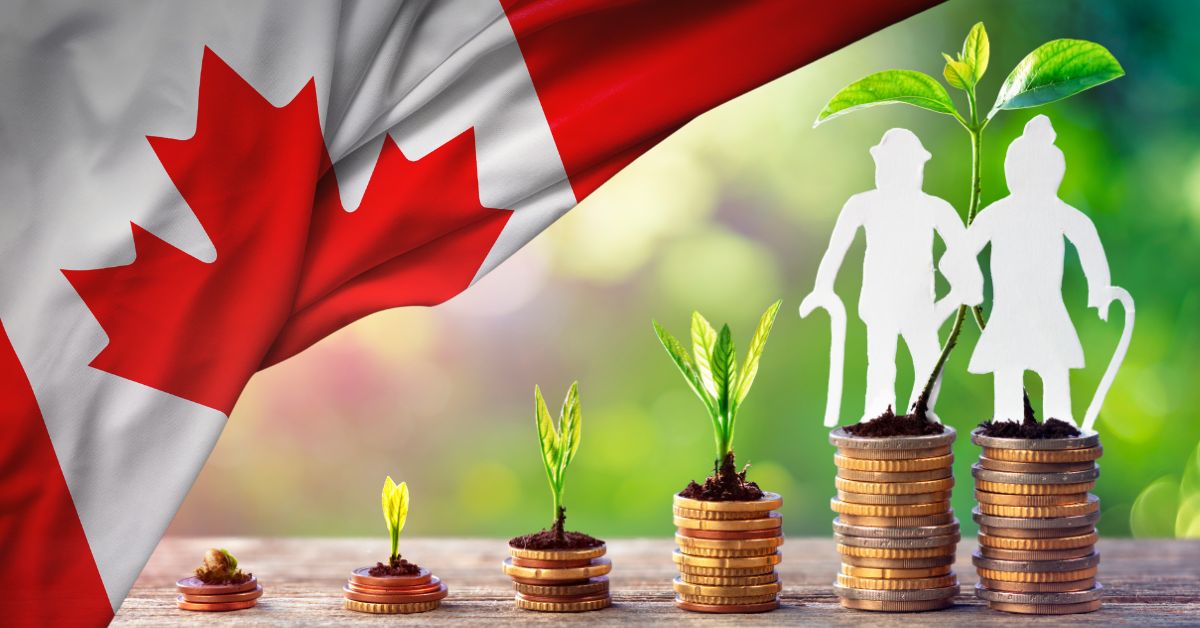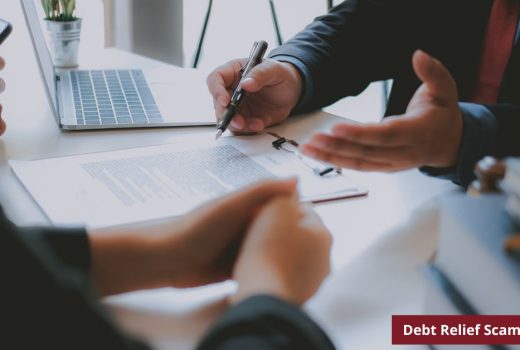In Canada, close to half of the students who graduate with a Bachelor’s degree owe…

The Canada Pension Plan And Bankruptcy
No one wants to retire in debt. But if you are one of the growing number of seniors facing this scenario – know you are not alone. If your only source of income is the government funds provided through Canada’s Old Age Security (OAS) and Canada Pension Plan (CPP) you don’t want to see it taken away if you file for Bankruptcy.
The good news is that there are laws in Canada that protect an individual’s pension in the case of Bankruptcy. In this article we will look at filing a Bankruptcy when you have retired.
Bankruptcy in Retirement
Your senior years should be the time to enjoy the rewards of a lifetime of hard work. Of course, a fulfilling retirement looks different for everyone, but it’s safe to say no one wants to enter their golden years carrying a lot of debt. Unfortunately, the number of seniors who retire with debt has increased over the last 20 years.
It used to be uncommon for people to retire with debt, but this isn’t true anymore. A study by StatsCan found 42% of senior families in 2016 were in debt. Much of this was due to mortgage debt. If you’re in this situation, managing day-to-day expenses, health care costs, and debt repayment on a reduced income may stretch your budget far beyond what it can do. Filing for Bankruptcy could be an option, but of course, you’ll want to know if your income and investments are safe from creditors.
Income in retirement typically comes from three sources:
- Government support such as the Canada Pension Plan and Old Age Security.
- Pension from your employer.
- Income from your investments.
Your retirement may have been initiated from being laid off or terminated. As a result, you could be collecting Employment Insurance (EI) before you officially retire. Filing for Bankruptcy will not cause any interruptions with your EI payments.
The Canada Pension Plan and Bankruptcy
The Canada Pension Plan is a source of retirement income for those 60 and over. Workers pay into the CPP during their working years, and employers also contribute on behalf of their employees. Once you retire, you receive a monthly CPP payment for life. The earliest you can apply for the CPP is when you turn 60.
The Canada Pension Plan provides income support for retirees. It’s usually not enough to give you enough income to pay all your bills. Your CPP payment depends on how much you paid into the plan. In 2023, the average CPP payment for new retirees who are 65 years of age is $811.21. The maximum CPP payment in 2023 is $1306.57 if you wait until 65 to collect it.
Like many Canadians, you might wonder if the CPP will be available for you when you retire or if it will run out of money. Experts say the CPP can pay benefits for the next 75 years. If you are contributing to CPP or did so in the past, you can expect to receive your Canada Pension Plan payments.
While you will probably need other sources of income in addition to CPP to pay your bills in retirement, the CPP makes a significant difference to many people. You might struggle financially if your creditors could lay claim to your CPP. If you file for Bankruptcy can rest assured that you won’t lose any of your CPP income.
Your Canada Pension Plan (CPP) is safe from creditors when you file for Bankruptcy. The only creditor who can claim your CPP is the Canada Revenue Agency (CRA). Filing for Bankruptcy will stop their claim against your CPP, so you won’t have to worry about the CRA taking your Canada Pension Plan.
Other creditors cannot seize your CPP but can garnish the payment from your bank account. Filing for Bankruptcy stops the garnishment of your payments.
Old Age Security and Bankruptcy
The Old Age Security (OAS) pension is a universal payment almost everyone 65 and over receives. Unlike CPP, you don’t have to apply for it. Once you turn 65, your OAS payment will be forwarded to you. As with the CPP, the Canada Revenue Agency can claim your OAS, but other creditors cannot. However, other creditors can garnish your OAS payment from your bank account.
Filing for Bankruptcy stops any garnishment of your OAS payment. It also prevents the Canada Revenue Agency from taking your OAS.
Work pensions
You may have a pension from your employer that you paid into for years. Once you retire, your pension will be a source of retirement income. Therefore, your employment income can be a primary source of income and considerably more than your CPP or OAS.
Your pension from work is protected if you file for Bankruptcy. Remember that any income from work pensions, CPP, OAS, or investments can be included in calculations for surplus income when filing for Bankruptcy. It’s also important to know that if you receive a lump sum pension payout from your employer, your creditors can petition the court to take some or all of that money if you have unpaid debts but don’t file for Bankruptcy.
Registered retirement plans
There are several registered retirement plans available in Canada. These plans are:
- Registered Retirement Savings Plan (RRSP).
- Registered Retirement Income Fund (RRIF).
- Locked-In Retirement Account (LIRA).
- Locked-In Registered Retirement Account (LRSP).
- Locked-In Income Fund (LIF).
Each of these plans gets its funds from different sources. An RRSP is a plan you contribute to for retirement. A locked-in plan is one your employer contributed to for your pension. Sometimes, you may have also contributed to a locked-in plan by deductions from your paycheque. These plans are either to save for retirement, such as the RRSP, or draw funds from as income in retirement, such as the RRIF.
If you file for Bankruptcy, your creditors cannot lay claim to any of these funds with one exception. The one exception is if you contributed to your Registered Retirement Savings Plan in the 12 months before filing for Bankruptcy.
Other investments
While investments in registered retirement accounts are protected from creditors when you file for Bankruptcy, other assets are not. Some examples of assets that can be seized to pay your creditors include:
- Funds in your Tax-Free Savings Account.
- Non-registered investments such as mutual funds, ETFs, stocks and Guaranteed Investment Certificates.
- Funds you deposited to a Registered Education Savings Plan..
- Rental properties.
- Equity in your home that exceeds the allowable amount.
- Your tax refund.
- The money you have in bank accounts.
- An inheritance.
Bankruptcy and Your Pensions
If you are retired and considering filing for Bankruptcy, you may have few assets outside your pensions. However, your pension income is essential for you to pay your expenses in retirement. Having debt you cannot repay can cause stress and make your retirement years miserable.
At Adamson and Associates, our Licensed Insolvency Trustees are experts in providing debt solutions to people with pension income. We will work with you to assess your financial situation and offer the best solution for your debt. We understand that you don’t want to put your retirement income at risk but want to get out from under your debt burden.
We offer financial counselling, Consumer Proposals and Bankruptcy to help you recover financially. Please contact us today at 519-310-5646 for your free, no-obligation consultation. We’ll help you get a fresh start to have a retirement free from financial stress.



